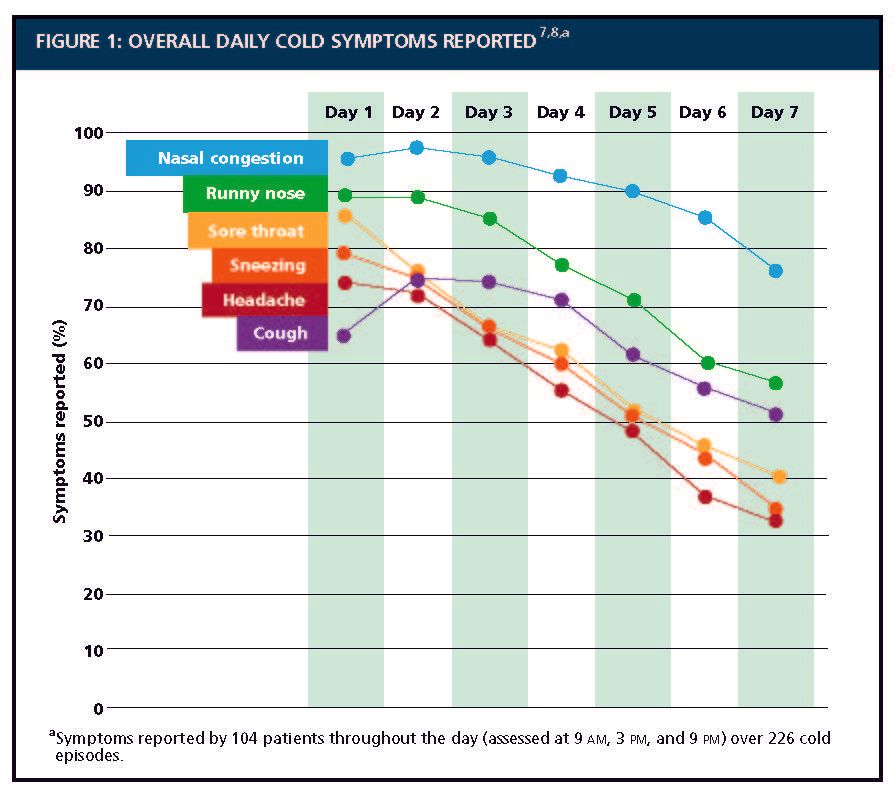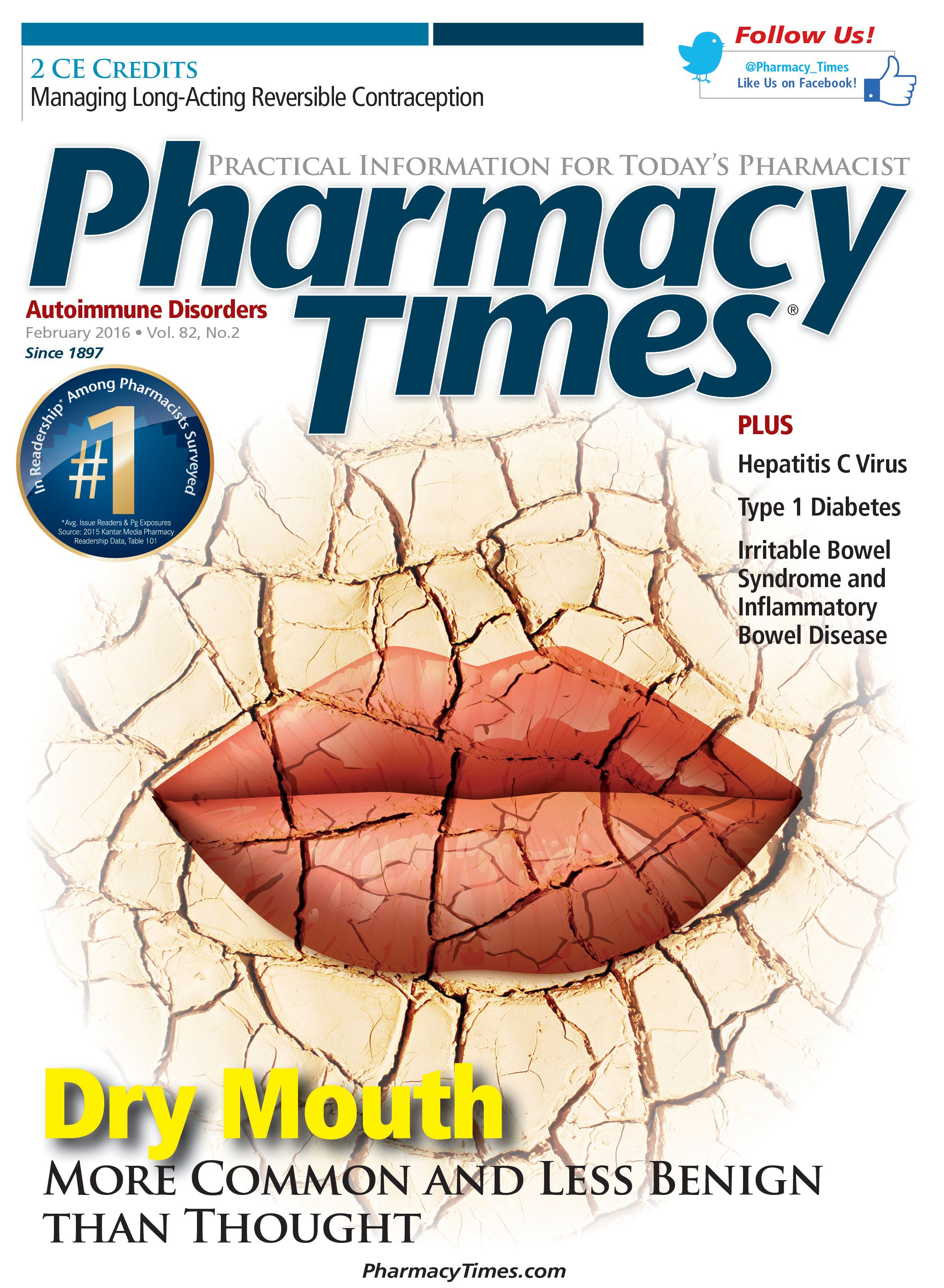An Update on the Role of Multi-Symptom OTC Self-Care Options for Cold & Flu Symptom Relief
This article is sponsored by Procter & Gamble.
Upper-respiratory tract infections (URTIs), including the common cold (or simply “cold”) and influenza (the “flu”), are ubiquitous, but self-limited, viral illnesses responsible for loss of productivity1,2 and high health care costs.3 Over 200 viruses can cause URTIs, and the large number of causative agents for URTIs is one of the reasons why there is no cure.4,5
Based on self-identified symptoms, patients may choose to treat URTIs with OTC products. Because of the seemingly overwhelming variety of cold and flu products available, patients will often seek their pharmacist’s guidance regarding which products are appropriate to address their various symptoms. Based on responses from a US-based survey, it has been estimated that pharmacists make more than 2 million “cough, cold and flu combination product” recommendations per month.6 Because they are among the most accessible and most trusted health care providers, pharmacists can counsel patients on the most appropriate nonprescription medicine to help relieve the multiple, concurrent, bothersome symptoms typically experienced with a cold or flu.
Cold and Flu: Multiple, Concurrent, Bothersome Symptoms
To understand how symptoms present during a URTI, Vicks, the makers of NyQuil and DayQuil, conducted a prospective cold surveillance study among employee volunteers.7 Data were gathered on community-acquired cold illness episodes over a 4-year period. The study is unique because the majority of subjects were enrolled within 24 hours of the start of cold symptoms. Self-reported cold symptoms over the first 7 days, assessed at 9 AM, 3 PM, and 9 PM, are shown in Figure 1.7,8 Nasal congestion was the predominant symptom, peaking on day 2 with 90% or more of cold episodes characterized by the presence of this symptom throughout the day for the first 5 days.7,8 The persistence of symptoms throughout the cold was evident by the fact that 61% of subjects reported that they were still experiencing at least one cold symptom at day 7.7,8

In an effort to assess which cold symptom was most impactful, cold sufferers were asked to indicate which single cold symptom was the “most bothersome” each day (Figure 2).9 On the first day, the single most bothersome symptom was sore throat, in approximately one-third (35%) of colds, with runny nose and nasal congestion rated as the most bothersome symptom in 17% and 16% of colds, respectively. Over the following 4 days, nasal congestion continued to be the most bothersome symptom. On day 4, the prevalence of nasal congestion as the most bothersome symptom peaked at 38%. Cough overtook nasal congestion as the most bothersome symptom, with 24% of patients on day 6 and 22% of patients on day 7 rating cough as their most bothersome symptom.9
Rationale for Using Multi-Symptom Relief Products
Although cold and flu illnesses are self-limited and gradually resolve within 7 to 10 days, the symptoms can nonetheless be unpleasant and disruptive to everyday life and activities. Often, patients seeking relief of these multiple, bothersome symptoms will ask their physician to prescribe an antibiotic, not understanding that antibiotics do not kill viruses, only bacteria, and will, therefore, not help them feel better or recover faster from a cold. This presents an opportunity for physicians and pharmacists to counsel patients that inappropriate antibiotic use may make it harder to fight future bacterial infections requiring use of an antibiotic,10 and that the best treatment is directed at relieving symptoms to help them manage daily or nightly activities until their cold goes away. To help patients feel better, it is recommended that they rest and drink plenty of fluids. In addition, OTC medicines can help relieve cold symptoms. As the typical cold and flu manifest with concurrent symptoms, it is appropriate to consider multiple symptom relief (MSR) products that relieve several symptoms simultaneously by combining active ingredients.11
Daytime and Nighttime Multi-Symptom Relief Options
When recommending the appropriate product to patients among available daytime or nighttime multi-symptom relief cold and flu products, the impact of patient preference is useful to consider. A consumer survey showed that patients choose to treat their symptoms with a cold and flu medicine so they can carry on with their daily routine at home (79%) or work (53%).12 Patients also reported that they seek symptom relief to help them get a good night’s sleep (81%).12 According to a separate, recent survey of adults who have used a cough, cold, or flu product in the past 24 months, patients prefer to use NyQuil for nighttime cough, cold, and flu symptoms versus leading brands, and DayQuil for non-drowsy relief of cough, cold, and flu symptoms versus leading brands (based on top brands from September 2015, among those who expressed a preference).13
Role of the Pharmacist
Pharmacists can educate patients on appropriate antibiotic use, what to expect over the course of their cold or flu illness, and steps they can take to help themselves feel better. OTC cough, cold, and flu medicines provide patients with convenient, cost-effective symptom relief that can help reduce the number of physician visits.14,15 Particularly in the first days of illness, MSR products help patients get relief from symptoms they report as bothersome, which can impact their ability to get through the day and sleep at night. Given the array of choices available in the cough, cold, and flu aisle, pharmacists can assist patients in selecting an appropriate product to relieve their symptoms. Patients should be reminded to always read product labels and use medications as directed.11
References
- Bramley TJ, Lerner D, Sarnes M. Productivity losses related to the common cold. J Occup Environ Med. 2002;44(9):822-829.
- Nichol KL, D’Heilly S, Ehlinger E. Colds and influenza-like illnesses in university students: impact on health, academic and work performance, and health care use. Clin Infect Dis. 2005;40(9):1263-1270.
- Fendrick AM, Monto AS, Nightengale B, Sarnes M. The economic burden of non-influenza-related viral respiratory tract infection in the United States. Arch Intern Med. 2003;163(4):487-494.
- Heikkinen T, Järvinen A. The common cold. Lancet. 2003;361(9351):51-59.
- Olszewska W, Zambon M, Openshaw PJ. Development of vaccines against common colds. Br Med Bull. 2002;62:99-111.
- 2015 Survey of Pharmacists’ OTC Recommendations. OTC Guide, Pharmacy Times. June 2015.
- Procter & Gamble. Data on file. Study #87-213.
- Witek TJ, Cohen SD, Geist FC, et al. The clinical course of acute upper respiratory infection. Paper presented at: XIV Congress of the European Rhinologic Society/XI International Symposium on Infection and Allergy of the Nose; October 6-10, 1992; Rome, Italy. Abstract 144.
- Witek TJ, Ramsey DL, Carr AN, Riker DK. The natural history of community-acquired common colds symptoms assessed over 4-years. Rhinology. 2015;53(1):81-88. doi: 10.4193/Rhin14.149.
- US Centers for Disease Control and Prevention. Get smart: know when antibiotics work. www.cdc.gov/getsmart/antibiotic-use/URI/colds.html. Accessed January 20, 2016.
- National Institutes of Health. Common cold. www.nlm.nih.gov/medlineplus/commoncold.html. Accessed January 20, 2016.
- Procter & Gamble. Data on file. Study #US-10D863.
- Procter & Gamble. Data on file. Study #US-159959.
- Temin P. Realized benefits from switching drugs. J Law Econ. 1995;35(2):351-369.
- The value of OTC medicine to the United States. Consumer Healthcare Products Association website. www.chpa.org/OTCvalue.aspx. Published January 2012. Accessed January 20, 2016.
- US Centers for Disease Control and Prevention. Do your part to slow the spread of flu. www.cdc.gov/nonpharmaceutical-interventions/pdf/do-your-part-slow-spread-flu-item5.pdf. Accessed January 20, 2016.
- US Centers for Disease Control and Prevention. The flu: caring for someone sick at home. www.cdc.gov/flu/pdf/freeresources/general/influenza_flu_homecare_guide.pdf. Accessed January 20, 2016.


